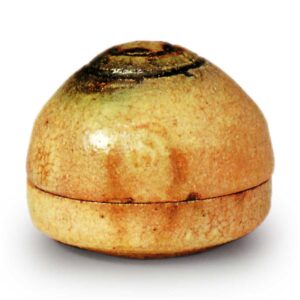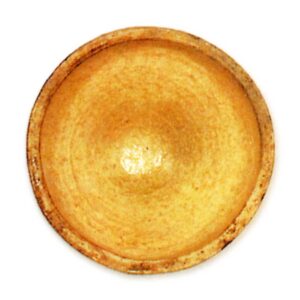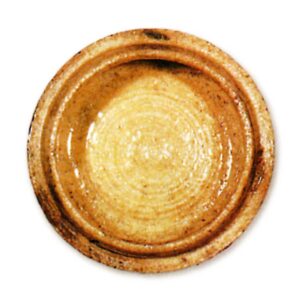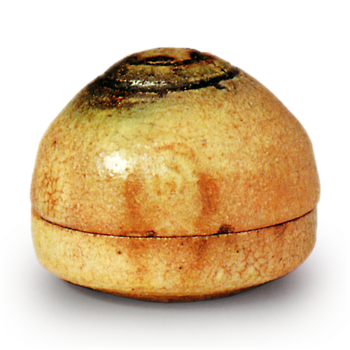


Height of the lid: 4.8cm, Diameter of the body: 4.8cm, Diameter of the bottom: 3.7cm
Nezu Museum
It is no exaggeration to say that this is probably the first masterpiece among Japanese ceramic incense containers. I think this is the most outstanding figurative work produced by the Orebi tea ceremony of the Momoyama period. What a soft and gentle appearance. What a soft and gentle figure of Kizeto. There are still some incense containers in the shape of a jewel, but those without a bulge on the back of the lid are not called “hoshu” but “neda. The masterpiece of this kind of plump, jewel-shaped incense container is only one of its kind in the world. This is the only one of its kind in Japan. It is an incense container with an inro lid and a goze bottom. The center of the bottom has been carved shallowly. Two lines are laid around the top of the body to symbolize the jewel, and an iron glaze is applied over the lines. The lines are covered with iron glaze and then covered with vitreous alum. The chalcanthite appears as a dark, thin blotch on the surface of the yellow-seto glaze, which has a moist, fried surface, and then passes through to the reverse side, where it shows a faint bluish tinge, so-called “ochi chalcanthite. The body of the vessel shows the skin of clay, and there are three marks where the body and lid were fired together, and a half-moon shaped mark remains on the bottom.



